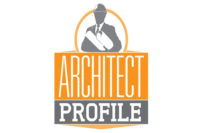Once the Board of Directors from top international architecture and design firm Perkins Eastman announced that Washington, DC Principal Matthew J. Bell had been elected to the American Institute of Architects College of Fellows, Walls & Ceilings knew we needed to interview Bell. Election to the College status is a notable honor, awarded by a jury of peers and recognizes achievements of national significance in advancing the architectural profession.
W&C Architect: How many years do you have in the profession?
About 25
W&C Architect: What is your work history in this field?
After receiving my undergraduate degree, I worked for a number of DC firms, including Shalom Baranes Associates. After four years of professional work, I returned to graduate school, and began teaching in the architecture program at the University of Maryland in 1989. I consulted with CHK-Torti Gallas Architects for about six years, and was Community Architect at King Farm in Rockville, MD for two years. I joined Ehrenkrantz Eckstut & Kuhn (EE&K) in 2000, which merged with Perkins Eastman in 2011.
W&C Architect: Where did you go to school?
I graduated from Notre Dame with a Bachelors of Architecture in 1983, and received a Masters of Architecture in Urban Design from Cornell University in 1989.
W&C Architect: Did you have a specialization?
Since my graduate degree was a specialization in urban design, much of my career in teaching and practice has been focused in that area; however, my work ranges from individual buildings, such as schools and community centers, to master plans for campuses and mixed-use developments.
W&C Architect: Do you approach architecture from an artistic or functional starting point? Are the two concepts exclusive?
Obviously a good piece of architecture has to satisfy both. If it neglects the former, it is merely “building,” not “architecture,” which is a value judgment on “building”. If it neglects the latter, it runs the risk of limiting itself to just personal artistic expression. My other criteria is that a good work of architecture has to, at times, make the mundane more interesting, and make proper settings to enhance human interaction at every scale.
W&C Architect: If any, who are your role models?
The greatest influence on my life as a student and teacher of architecture has been my late teacher, Colin Rowe, who forgot more things than most architects know! He had insights that ran the gamut from furniture and furnishings, to plans for entire cities. He was always engaging and I could almost never predict what he was going to say or how he would react to something. His insights remain profound and long lasting.
Professionally, the two people I have learned the most from are Andres Duany and John Torti. Andres is the closest to Colin in real and profound insights about architecture and urbanism, and John was one of the best people I ever worked with in terms of managing clients and staff. His typical mantra was, “Don’t bring me problems, bring me solutions...” I’m not sure if he invented that saying, but he certainly lives by it. His lessons in leadership remain with me today.
W&C Architect: What projects, other than your own work, do you find inspiring?
I tend to look to older places and buildings. I always find myself looking at Paris, Rome, London and Naples for inspiration, from the streets and plazas to the individual buildings, but I also love great American cities, such as New York and Chicago. I love the modern architecture of Italy in the 1930’s and find myself re-examining that era frequently. The designs were innovative, beautiful and profoundly urban. It was a very interesting period. But the most inspiring building for me is the Pantheon in Rome. It never ceases to amaze me.
W&C Architect: How many buildings have you designed?
Since I practice at large urban scales and also the scale of the individual building, it’s a little hard to quantify!
W&C Architect: If you had to choose one to represent your work, what project would you choose?
One recent project, currently under construction that I am most proud of is Dunbar High School in Washington, DC. We are seeking LEED Platinum. The site plan and the building do a number of important things urbanistically, such as establish a new relationship to the park across the street, change scales according to the context, open a L’Enfant street that was closed, and provide a sense of place to a school community that was saddled with an unattractive, outdated high school with few windows.
W&C Architect: What are your guiding principles when designing a structure?
My measure of quality is generally based on establishing a positive relationship with the context; providing a legible setting for public interaction; and, meeting the needs of the program/site with good proportions, ease of use, and changing the context for the better with our intervention.
W&C Architect: If you could have any building to redesign—anywhere in the world—which would you like to address?
Without a doubt, the Kennedy Center. Washington, DC would be ever so much better if the building was less of an isolated object, and was more integrated with the fabric of the city. No matter how hard they try, it so un-urban and detached, and yet it houses some of the finest cultural programs in the world. Imaging the cultural arts district (places to eat, places to see a show, all within easy walking distance!) that would result if it was more like a Broadway theater, that is, integrated with the streets and blocks of the city. As it stands, it is very suburban and apart from its size, makes little positive impact on its neighborhood.
W&C Architect: What types of products in the wall and ceiling industry really interest you?
For walls, I generally think the thicker the better. There is nothing like a wall that has thickness and depth such that it can be inhabited. The surface material can be almost anything, but dimension is the key. Even the implication of thickness and depth, which today is perhaps more practical, is a good thing. For ceilings, almost anything but a lay-in grid of ceiling tile!












